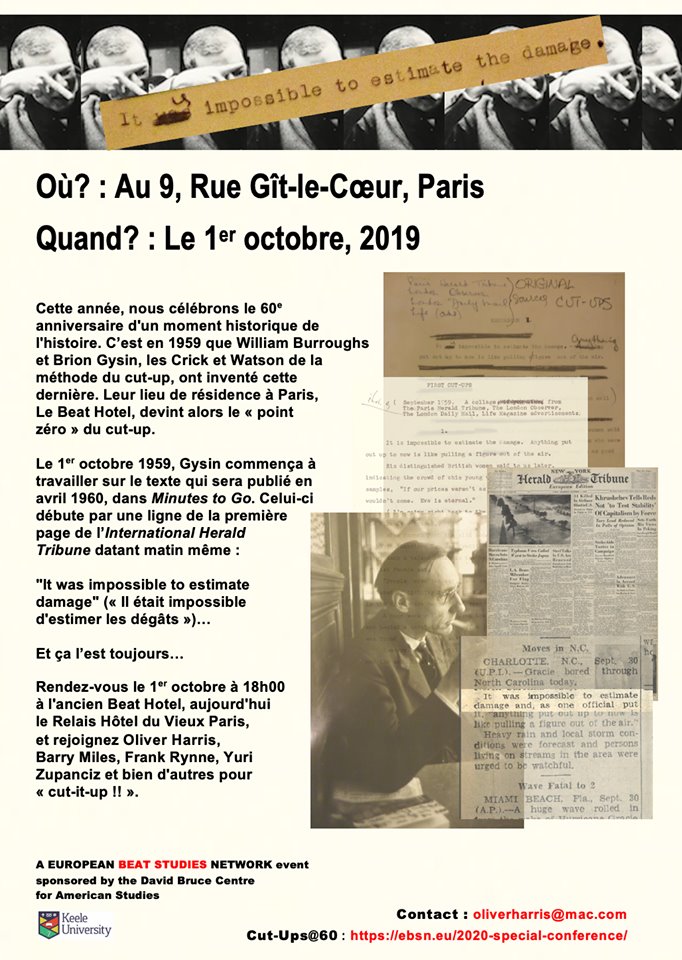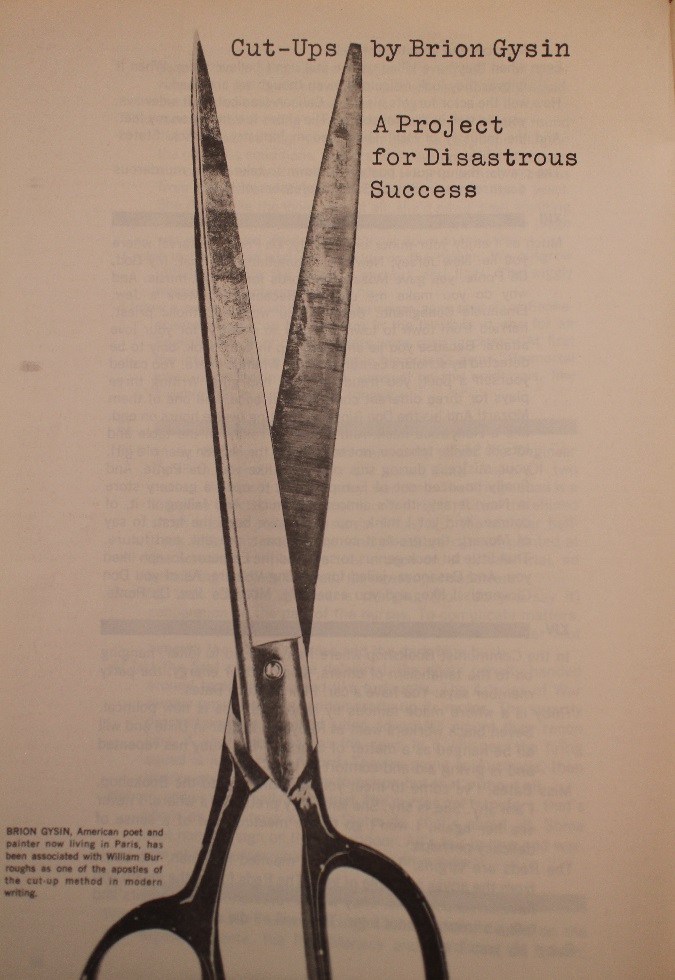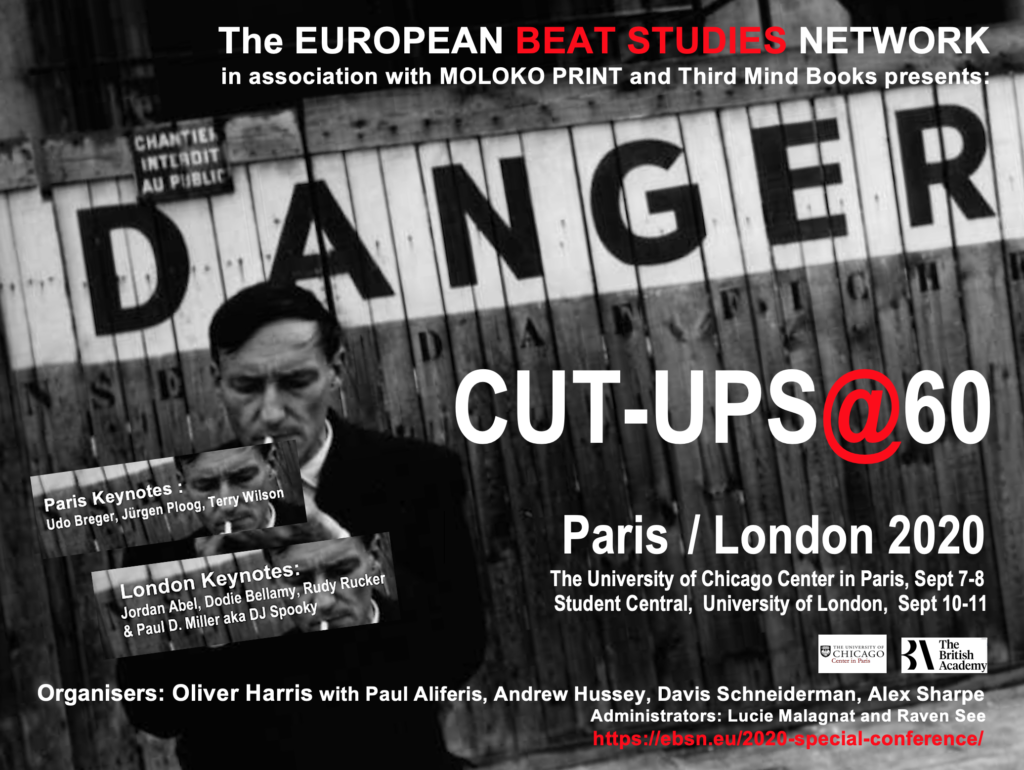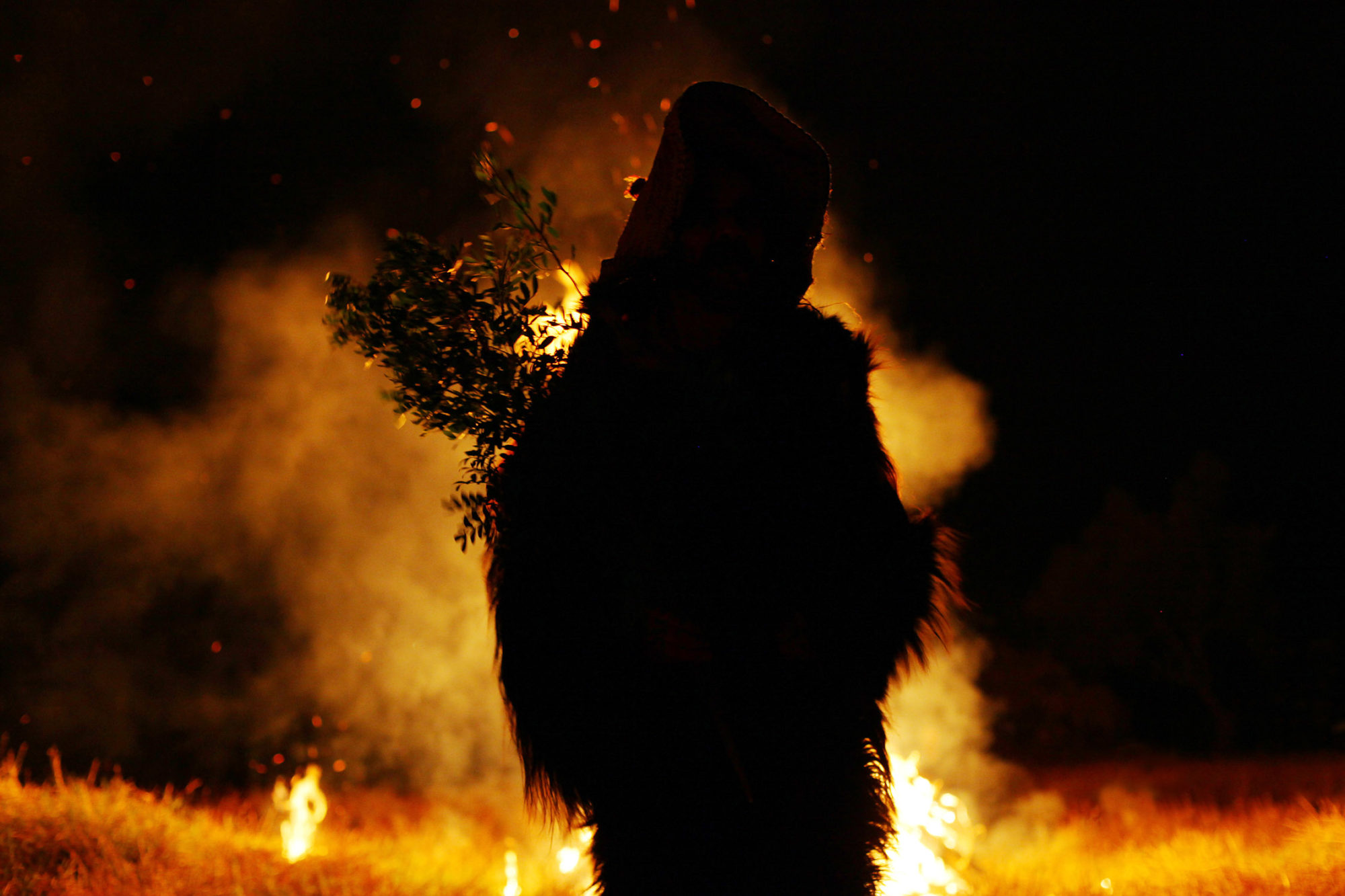
It Is Impossible To Estimate The Damage will mark the 60th anniversary since Brion Gysin and William S. Burroughs’ experiments with the Cut-Up during their residence at the Beat Hotel in Paris.
The gathering will be held in Paris on 1st October 2019 at 9 Rue Gît-le-Cœur, the location of the old Beat Hotel, ahead of a series of events to celebrate the Cut-Ups@60 next year organised by the European Beat Studies Network.
The event will be hosted by Barry Miles, Oliver Harris and Frank Rynne.
Brion Gysin moved to the Beat Hotel in 1958 following the closure of The 1001 Nights restaurant he ran in Tangier, Morocco, working with Mohamed Hamri and where the Master Musicians of Joujouka had a residency.
William S. Burroughs returned from London to Paris in September 1959, where Gysin shared his new discovery of the Cut-Up technique.

William S. Burroughs, The Cut Up Method (1963):
In the summer of 1959 Brion Gysin painter and writer cut newspaper articles into sections and rearranged the sections at random. Minutes To Go resulted from this initial cut up experiment. Minutes To Go contains unedited unchanged cut ups emerging as quite coherent and meaningful prose.
The cut up method brings to writers the collage which has been used by painters for fifty years. And used by the moving and still camera. In fact all street shots from movie or still cameras are by the unpredictable factors of passers by and juxtaposition cut ups. And photographers will tell you that often their best shots are accidents . . . writers will tell you the same. The best writing seems to be done almost by accident but writers until the cut up method was made explicit– (all writing is in fact cut ups. I will return to this point)–had no way to produce the accident of spontaneity. You can not will spontaneity. But you can introduce the unpredictable spontaneous factor with a pair of scissors.
Barry Miles was Burroughs’ friend and biographer and ran the Indica Bookshop and Gallery in the courtyard of the building in Duke Street, St James’s, where Burroughs, Gysin and filmmaker Anthony Balch lived. He has written extensively on the Beats and counterculture, including William S. Burroughs, A Life (2014), Call Me Burroughs, A Life (2014) and The Beat Hotel (2001). In addition, Miles engineered the 1972 Master Musicians of Jajouka LP – The Primal Energy That Is The Music And Ritual Of Jajouka, Morocco.
Oliver Harris is the editor of the first volume of William S. Burroughs’ letters, Letters, 1945-1959 (1993)and has edited several definitive editions of his works including Junky: the definitive text of Junk (2003), The Yage Letters Redux (2006), Queer (2010), and The Cut-Up Trilogy, The Soft Machine, Nova Express, and The Ticket That Exploded (2014). He is President of the European Beat Studies Network.
Frank Rynne has managed the Master Musicians of Joujouka since 1994 and organised the Here To Go Show in Dublin in 1992 – the first major exhibition to include the paintings of Burroughs and Gysin. He produced the album 10%: File Under Burroughs (1996) (featuring Burroughs, Gysin, Hamri and the Master Musicians of Joujouka) and researched Man From Nowhere: Storming The Citadels Of Enlightenment With William S. Burroughs And Brion Gysin (1992).
The event will be held at 9 Rue Gît-le-Cœur, the location of the old Beat Hotel, on Tuesday, 1st October 2019 from 6pm. All welcome.

Cut-Ups@60
The European Beat Studies Network hosts the Cut-Ups@60 in 2020, with a series of events and happenings at The University of Chicago in Paris from 7-8 September and Student Central, University of London from 10-11 September.
The event will celebrate the 60th anniversary since the first publications using the cut-up method initiated by William Burroughs and Brion Gysin at the Beat Hotel in Paris and which they continued to develop during their subsequent time living in London throughout the 1960s.
For more information visit: ebsn.eu/2020-special-conference

